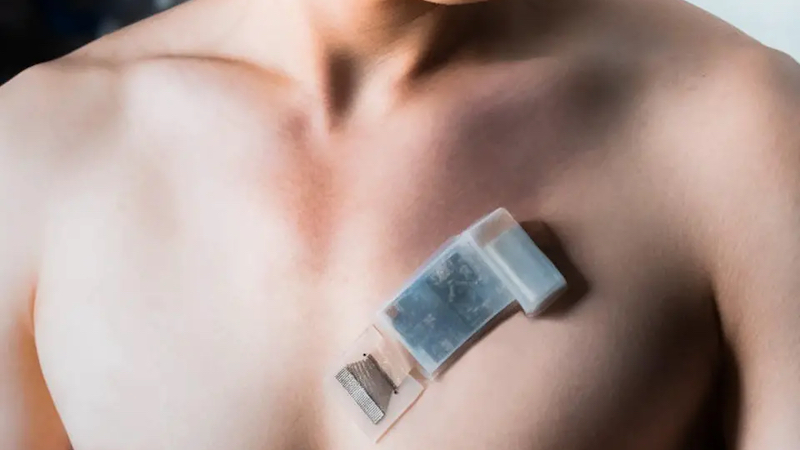This portable ultrasound patch can monitor tissue
Researchers from the USA have developed a portable system for monitoring tissue for the first time. Because their so-called ultrasound plaster is portable and does not require a cable.
The advancing digitization does not stop at medicine. Devices for medical monitoring are getting smaller and smaller and in this way enable interference-free monitoring that is suitable for everyday use. Now show that too Researchers at the University of California at San Diego. They want to revolutionize heart health monitoring with an ultrasound patch.
The device presented is roughly the size of a larger plaster and includes all the technologies necessary for surveillance. The basis is an ultrasound system for monitoring deeper tissue. The technology transmits the recorded data wirelessly to a receiving device.
Ultrasound Patch: Tissue monitoring up to 16.4 centimeters deep
The so-called ultrasound system on plaster (USoP) is based on further research carried out by various teams in California. However, past research has continued to pose a problem for patients. Because previous systems were wired and thus limited the mobility of the wearer.
The further development now presented, on the other hand, works completely wirelessly and interprets the data using an intelligent algorithm. The system records signals from a depth of up to 16.4 centimetres. Including: blood pressure, heart rate, cardiac output and other parameters. One battery charge lasts for about twelve hours.
Sensors enable live data from everyday life
Patients with previous illnesses are likely to benefit in particular. Because the system interprets data over a longer period of time without restricting mobility. The advantage of this is obvious: the data is generated in everyday life, not under laboratory conditions.
To do this, the researchers stuck the system to the chests of test persons and used materials that are stable and at the same time slightly stretchy. They even exceeded their own goals. In the next step, the team wants to test the sensor in larger test groups and bring the technology to market in the foreseeable future.
Also interesting:



